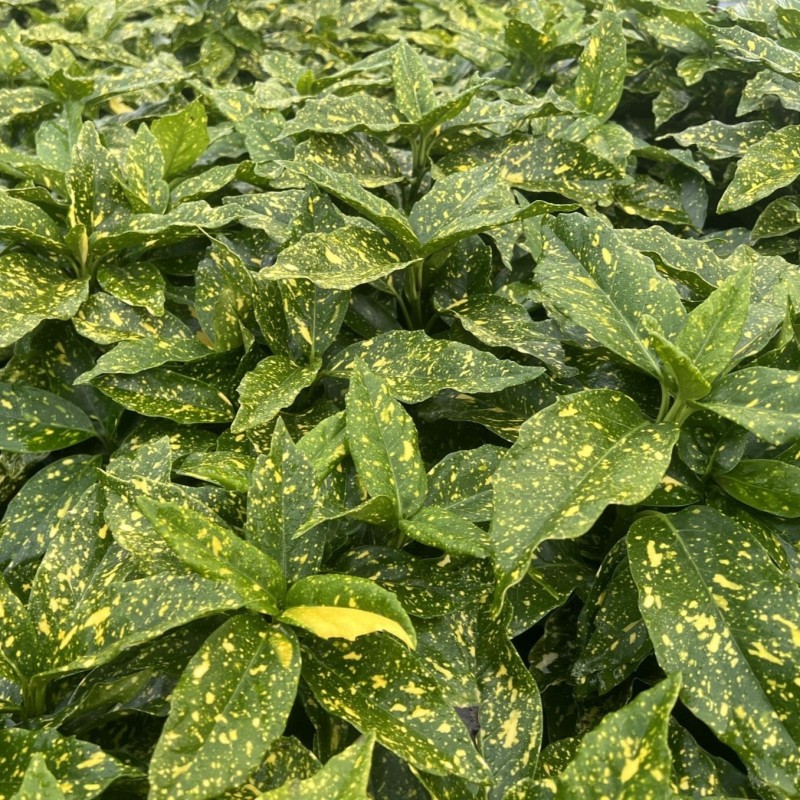Aucuba japonica, commonly called spotted laurel, Japanese laurel, Japanese aucuba or gold dust plant (U.S.), is a shrub (1–5 m, 3.3–16.4 ft) native to rich forest soils of moist valleys, thickets, by streams and near shaded moist rocks in China, Korea, and Japan. This is the species of Aucuba commonly seen in gardens - often in variegated form. The leaves are opposite, broad lanceolate, 5–8 cm (2.0–3.1 in) long and 2–5 cm (0.79–1.97 in) wide. Aucuba japonica are dioecious. The flowers are small, 4–8 mm (0.16–0.31 in) diameter, each with four purplish-brown petals; they are produced in clusters of 10-30 in a loose cyme. The fruit is a red drupe approximately 1 cm (0.39 in) in diameter that is avoided by birds. The golden variegation patterns are inherited from the mother plant. If the female plant is variegated, the seedlings will be variegated regardless of what the male looks like. If the female plant is green and male is variegated, the seedlings will be green. This indicates that the cause of variegation is not under the control of the DNA of the nucleus, but probably under the control of the chloroplasts where photosynthesis occurs. Chloroplasts float in the cytoplasm of each cell and are inherited from the female parent.

